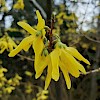
IDS Yearbook 2022
Tom Christian
As every IDS member should know, IDS Trees and Shrubs Online (TSO) is the society’s flagship project – a free-to-access digital encyclopaedia of woody plants cultivated in temperate parts of the world. It aims to be a contemporary, comprehensive and authoritative reference for botanists...
View PDF
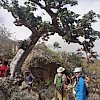
IDS Yearbook 2022
Fergus Kinmonth
Socotra is a speck in the Arabian Sea, measuring 125 × 50 km, lying 290 km from Somalia and 380 km from Arabia. Nominally belonging to Yemen, plate tectonics and continental drift separated the archipelago from its original position close to Madagascar some 65 M years ago. As the light lifted...
View PDF
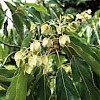
IDS Yearbook 2022
Roy Lancaster
It is a cold but sunny morning in January as I write about ten of my favourite trees in the suburban garden my wife Sue and I have planted and enjoyed since we moved here in October 1982. Our third of an acre plot wraps itself around the house and comprises two...
View PDF
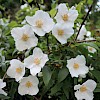
IDS Yearbook 2022
Jack Aldridge
Philadelphus are a mainstay genus in the summer shrub garden, where they are relied upon for an outstanding performance in June, along with their indifference to poor soils and, in many cases, exquisite fragrance. Like many shrubs, they have somewhat fallen out of favour, although...
View PDF
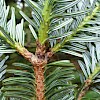
IDS Yearbook 2021
Tom Christian
The firs (Abies) are a genus of ca. 60 species of evergreen, coniferous, mostly very large trees (Christian, 2021). The propensity for closely related firs to hybridise is well documented, and in cultivation home-grown seed will often yield hybrid forms when closely...
View PDF
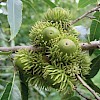
IDS Yearbook 2021
Tom Christian
‘Labels should not be trusted too much, even in well-curated collections.’ So concludes Julian Sutton in his new account of the genus Hoheria which was published in IDS Trees and Shrubs Online in October 2021. The lacebarks are a beautiful genus of late-summer-flowering...
View PDF
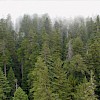
IDS Yearbook 2021
Marie E. Antoine and Professor Stephen C. Sillett
We study trees and forests. Coast redwood, giant sequoia, Douglas-fir, Sitka spruce. The four tallest conifers have been our main focus for over two decades. A recent article in Forest Ecology and Management (Sillett et al., 2021) covers what we have learned. This represents a...
View PDF
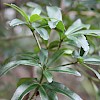
IDS Yearbook 2021
Seamus O’Brien
Sir John Franklin (1786–1847) served as Lieutenant-Governor of Van Diemen’s Land from 1839–1843. It was a pioneering time in Australia’s colonial history and he and his adventurous wife, Jane, Lady Franklin (1791–1875) spent a great deal of time exploring the southern and...
View PDF
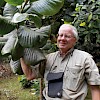
IDS Yearbook 2021
Richard B. Figlar and Marcela Serna González
The first description of a Magnolia species in Colombia began with the priest (and self-taught botanist) Juan María Céspedes, who had made extensive plant collections, that were unfortunately destroyed by a fire at his residence and herbarium near Bogotá in 1840. This herbarium had included a...
View PDF
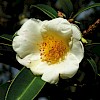
IDS Yearbook 2021
Bleddyn Wynn-Jones and Julian M H Shaw
Polyspora is a welcome addition to the evergreen Camellia-like trees and shrubs with spectacular flowers. In Vietnam, the total number of Theaceae taxa includes 11 genera and about 80 species according to Nguyễn (2017). Since 1999, over 47 new Camellia species have been...
View PDF
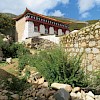
IDS Yearbook 2020
Julian Harber
In 1991 my partner Jill Liddington and I moved to Foster Clough, a tiny hamlet above the Calder Valley in the Pennines in West Yorkshire. This was the first house I had lived in since childhood with a substantial garden and I was keen to do something with it. I had many years’ experience of growing...
View PDF
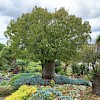
IDS Yearbook 2020
Simon and Mariese Grant
Brachychiton is a genus of trees and shrubs coming predominantly either from Australia’s eastern rainforests or its northern semi-arid monsoon regions. Despite the fact that 30 out of 31 recognised species of Brachychiton come from Australia (the non-endemic species comes from...
View PDF
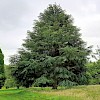
IDS Yearbook 2020
Tom Christian
The classification and taxonomy of the genus Cedrus has become increasingly contentious in recent decades. Impassioned arguments exist in literature for recognising four, three, or only two species. Cedrus deodara has an isolated distribution in the Hindu Kush, Karakoram, and...
View PDF
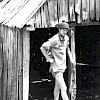
IDS Yearbook 2020
Michael A. A. Banks
Many stories have been written about our NZ Kauri (Agathis australis). For my part, the earliest I remember about Kauri, was not the tree but Kauri gum. On our farm ‘Surrey Hills’, some ten miles west of Huntly in the Waikato, Dad ploughed many of the paddocks for winter turnip crops...
View PDF
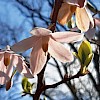
IDS Yearbook 2020
Maurice Foster
Introduced into cultivation around 25 years ago, Melliodendron xylocarpum has already established a reputation as one of the most beautiful flowering small trees for cool temperate gardens and one of the finest of recent woody plant introductions. According to New Trees, it arrived...
View PDF
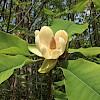
IDS Yearbook 2020
Harry Watkins and Henrik Sjöman
It’s hard not to feel that the forester’s mantra of the ‘right tree for the right place’ is something of a unicorn for those working in urban environments. How often do we see new developments with houses laid out along streets lined with cherry trees and birches, when we know that the...
View PDF
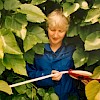
IDS Yearbook 2020
Owen Johnson
The backbone of today’s Tree Register derives from the life-work of Alan Farley Mitchell, who in the years from 1954 was employed by the UK Forestry Commission as a geneticist, researching clones and species for their timber potential. In this role he visited thousands of estates and arboreta, building a...
View PDF
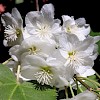
IDS Yearbook 2020
Tom Christian
Sitting down to write an update on Trees and Shrubs Online in spring 2021, one is forced to address the topical dilemma: whether or not to mention the C-word? On balance, it cannot be ignored in this context any more than it can be ignored in any other, for as we have heard so much during...
View PDF
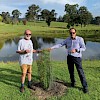
IDS Yearbook 2020
Brian Myers
In the early hours of New Year’s Eve 2019 a massive bushfire ravaged the town of Cobargo in south-eastern New South Wales (NSW) and numerous surrounding localities including Wandella. Virtually all trees in Wandella Woods Arboretum owned and managed by IDS members...
View PDF
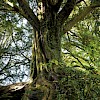
IDS Yearbook 2019
Aaron Brennan
Blarney Castle is fortunate to have a continuous flow of trees and shrubs entering into the gardens from a multitude of sources which necessitates the keeping of accurate information including plant name, source of material, date of planting and the planting location within the castle environs. Under the direction of...
View PDF
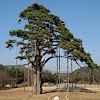
IDS Yearbook 2019
Jill Matthews
The Korean red pine 소나무 (Pinus densiflora) is widely regarded as the national tree of Korea. The same tree is known as Japanese red pine in Japan. It is endemic throughout the Korean peninsula, and adjacent parts of China and in Japan, where fossil traces have been found dating to the...
View PDF
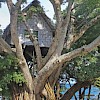
IDS Yearbook 2019
Alistair Watt
One of the great things about being a dendrologist is that there always seems to be something new and interesting to find as we travel, be it a dramatic tree growing beside the road or a stately looking specimen growing in a public park. We have had the opportunity to visit many parts of the world, always...
View PDF

IDS Yearbook 2019
Tom Christian
Over the past two to three years there have only been a few, brief updates to members on progress with Trees and Shrubs Online, the most recent in Giles Crisp’s ‘Chairman’s Update’ at the beginning of the 2018 yearbook, but a great deal of important and exciting progress has been...
View PDF
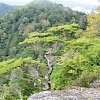
IDS Yearbook 2018
Ben Jones
Over the past few years I have been fortunate enough to spend time conducting fieldwork in the Chichibu Mountains, Saitama Prefecture, central Japan. The work being undertaken forms part of a long-term collaborative project, led by the University of Oxford Botanic Garden & Arboretum (OBGA). Working with...
View PDF
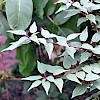
IDS Yearbook 2018
Eric Wahlsteen
Clematoclethra is a garden worthy plant which produces an abundance of white, pendent, lily of the valley scented flowers in May and ornamental black berries in the summer. Following the latest revision of the genus (Tang and Xiang, 1989) it includes only one species and four subspecies distributed in...
View PDF
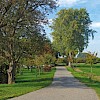
IDS Yearbook 2018
Caroline Boisset
The Veldstraat (Field Lane) in the municipality of Wijk en Aalburg, which is situated along a sandy ridge, has been in existence since the Roman period; adjacent to it are several medieval buildings which are testament to its importance in the locality. Lining the lane, on what is considered to be...
View PDF
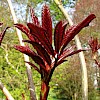
IDS Yearbook 2018
Chris Sanders and John Grimshaw
On 18 September 1995 a party of Rhododendron enthusiasts set off on a plant-hunting expedition from Chengdu in Sichuan to the Wumengshan, about 130 km (80 miles) north of Kunming, Yunnan. Their route took them in a southerly direction through central-south Sichuan, across the Yangtse and into...
View PDF
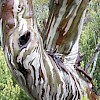
IDS Yearbook 2018
Seamus O’Brien
In recent years Kilmacurragh has seen a flood of new, mostly wild-origin trees and shrubs, sourced from across the globe. Some of these plants have arrived through collaborative projects with the Royal Botanic Gardens, Kew and the Royal Botanic Garden, Edinburgh. I had previously travelled...
View PDF
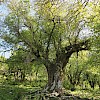
IDS Yearbook 2018
Laurence Fazan et al
The genus Zelkova belongs to the elm family (Ulmaceae) and its species were main and widespread components of the forests of the Northern Hemisphere during the Cenozoic Era. Nowadays, the six extant Zelkova species have a disjunct distribution. Zelkova serrata, Z. schneideriana and...
View PDF
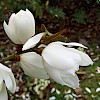
IDS Yearbook 2017
Charles H. Williams
The garden at Caerhays in Cornwall, which benefits from a mild damp climate, has an exceptional collection of magnolia species many of which were introduced in the early part of the twentieth century. Among the late flowering species which were until recently classified as Michelia there is some...
View PDF
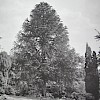
IDS Yearbook 2017
David Gedye
Much that is written about the introduction of the monkey puzzle tree into the British Isles is misleading. A plaque labelling an Araucaria in the grounds of Berkeley University, California, outlines the tree’s introduction as: “A legend tells that when Captain Cook first saw the unusual Araucaria araucana during...
View PDF

IDS Yearbook 2017
Graham Baker
In June 1963, Lee Quan Yew planted a Mempat tree (Cratoxylum formosum), a pink flowering, medium-sized, native tree, marking the start of his initiative to transform Singapore into a garden city. Since then, so many trees have been planted that his dream has...
View PDF
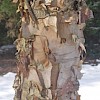
IDS Yearbook 2016
Hugh Morris and Steven Jansen
Plants do not move, but remain in situ, with perhaps the exception of the walking palm Socratea exhorrhiza, where with the aid of stilt roots it can shift from the place of germination. Plants do not have a brain, an organ of soft nervous tissue located mostly inside the skull of vertebrates. This sounds like an...
View PDF
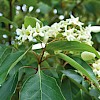
IDS Yearbook 2016
Abraham Rammeloo
At Arboretum Kalmthout, the blooming of the Emmenopterys is always reason for jubilation. As soon as the first signs of buds appear in June or early July, we roll out the action plan we always have on hand. The gardeners are at the ready, the gift shop, bookshop and plant centre are stocked with the...
View PDF
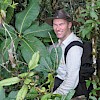
IDS Yearbook 2016
Richard A. Baines
During our expedition three extended trips into the Hoang Lien Mountains region were carried out to collect plant material and record the flora that we encountered. The trip built on a previous visit in 2014 (see IDS Yearbook 2015 pp. 69–78) where over 500 collections were made, some of them...
View PDF
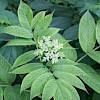
IDS Yearbook 2016
Alistair Watt
Two notes drew my initial attention to the Tianmushan. The first was a short comment made by Robert Fortune in 1857 in his third book, Residence among the Chinese: ‘A mountain called Tein-muh-shan celebrated for its height and for its temples’. This was followed by a helpful comment from...
View PDF

IDS Yearbook 2015
Eric Wahlsteen
In autumn 2009, I travelled in western Sichuan with the aim of seeing and collecting the fairly recently described Sorbus gonggashanica (McAllister 2005) growing in the foothills of mount Gongga. We lived with a family in the Tibetan village of Liuba, mentioned by Lancaster (2008). The village is nowadays...
View PDF
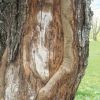
IDS Yearbook 2015
Griselda and William Kerr
revised by Dr Stephanos Diamandis
This alien parasite, which originated in China, was responsible for killing almost 100% of the American chestnut (Castanea dentata) in the USA in the first half of the twentieth century (1.3 billion trees). In 1938 it entered Europe through Italy with similar potential long term effects. Since 1963 when it...
View PDF

IDS Yearbook 2015
Chris Lane
Imagine how my curiosity was piqued when in 2005 I received an email from a Mr Steve Leonard from Mississippi, USA saying that he had discovered a witch hazel in the wild which he could not find mentioned in my then recently published book on the genus. (Lane, C., 2005). Initially his...
View PDF
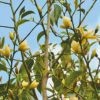
IDS Yearbook 2015
Carol Gurney
In 2005 I got two small plants of what is thought to be this species from Peter Chappell, who sadly died in May 2015, who had somehow got them from China, and planted them in different parts of my garden here in Suffolk. Then in November 2006 we saw a number of large trees of the species on the IDS tour to...
View PDF
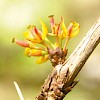
IDS Yearbook 2014
Julian Harber
In the early part of the twentieth century Mori Ushinosuke collected two berberis species in Taiwan which were named, by Hayata, Berberis aristatoserrulata and B. brevisepala, both of which remained known as incomplete herbarium specimens. In April 2014 Julian Harber an authority on the genus had...
View PDF
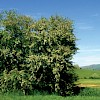
IDS Yearbook 2014
Ron Lance
In every dendrologist’s life, there are memories equivalent to fish tales among fishermen, revelations among artists, crop booms and busts of farmers. We relive catching “big ones” and lament the ones that “got away” from our experiences. Memories of grand treks and first acquaintances of...
View PDF
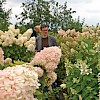
IDS Yearbook 2014
Ronald Houtman
The Koninklijke Vereniging voor Boskoopse Culturen (Royal Boskoop Horticultural Society), RBHS has a long history in assessing plants. When founded in 1861, the main goal of the society was “to put the correct names to the plants grown”. In the first years after founding, the board visited nurseries to check...
View PDF
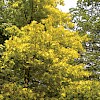
IDS Yearbook 2014
Tim Whiteley
About 30 years ago, walking in Philippe de Spoelberch’s lovely arboretum at Wespelaar in Belgium, I picked up several acorns beneath his golden oak tree. All the IDS members who were with me told me that I was wasting my time as it had to be grafted, but being middle aged...
View PDF
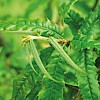
IDS Yearbook 2014
Allen J. Coombes and Zhou Zhekun
For several years, an unusual oak has grown in the National Collection of oaks at Chevithorne Barton, home of Mr Michael Heathcoat Amory. Tentatively listed as Quercus lanata, but obviously different to that species, it had defied all attempts to identify it further. However, the first author discovered a perfect...
View PDF
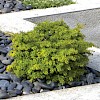
IDS Yearbook 2014
David Howells
During my gardening lifetime conifers have swung in and out of fashion. In the UK it was Adrian Bloom who brought them into prominence in the 1970s, creating a famous conifer garden at Bressingham and then demonstrating how small conifers and heathers were the...
View PDF
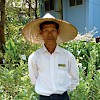
IDS Yearbook 2014
David Sayers
In February 2014, going south of Yangon (Rangoon) to visit Moulmein, Amherst and beyond, the long drive into Lower Burma passes extensive rubber plantations and then fruit farms and a major centre for producing the most delicious pomelos. Few tourists have yet to...
View PDF
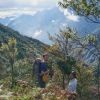
IDS Yearbook 2014
Richard A. Baines
In October 2014 Richard A. Baines, Curator, Logan Botanic Garden organised a four week expedition to northwest Vietnam and writes about the different habitats and plants found. The main focus of the expedition was the Hoang Lien mountain range and we had the privilege of...
View PDF
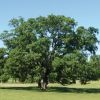
IDS Yearbook 2013
Roderick Cameron
In the 2002 IDS Yearbook, a brief note mentions that member Peter Laharrague had come across an “extraordinarily large specimen of Quercus suber” in Parque Anchorena, just north of Colonia del Sacramento in Uruguay. It was suggested that it may be the largest cork oak in the...
View PDF
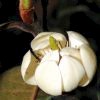
IDS Yearbook 2013
Chris Callaghan and S. K. Png
Following Thomas Methuen-Campbell’s interesting report in the 2011 IDS Yearbook concerning the study weekend held in June of that year at RHS Wisley, Surrey, to discuss “summer” flowering magnolias (see Endnote), the authors thought they should write to mention an important consideration before...
View PDF
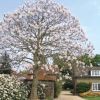
IDS Yearbook 2013
Update
In May 2013, during Chelsea week the International Dendrology Society visited Peasmarsh Place in East Sussex. In his report Dan Luscombe (see IDS Yearbook 2013, pages 89–90) relates how the group admired a young specimen of Paulownia fargesii in full flower. Nearby is an older tree of P. fortunei which...
View PDF

IDS Yearbook 2013
James Armitage, Valéry Malécot and Lu Zhang
It is perhaps surprising how much the cultivated flora of Beijing has in common with that of many European cities. Ailanthus, juniper, Platanus, Rhus and sycamore abound while Salix × sepulcralis finds a counterpart in S. matsudana var. pseudomatsudana. However, there is one common tree that most...
View PDF
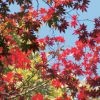
IDS Yearbook 2012
Gennady A. Firsov
Autumn on the shores of the Gulf of Finland arrives in the last days of August. The leaves of the birch and the elm are the first to turn yellow. The red and orange berries of the barberry, the mountain ash and the hawthorn stand out brightly as do the ribbed variegated berries of...
View PDF
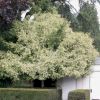
IDS Yearbook 2012
Abraham Rammeloo
Torreya is a genus of conifers that comprises four to six species that are native to North America and Asia. It is closely related to Taxus and Cephalotaxus and is easily confused with the latter. However, it is relatively easy to distinguish them apart by their leaves. Torreya has needles with...
View PDF
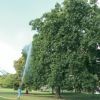
IDS Yearbook 2012
Sara Oldfield
On 7 November 2012 the Society held a national conference in the Jodrell Lecture Theatre at the Royal Botanic Gardens, Kew, on some of the threats facing trees not only in the United Kingdom but throughout the temperate world. Over 100 people attended, many from...
View PDF
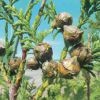
IDS Yearbook 2012
Tom Christian
The Vietnamese yellow cypress caused a small sensation when it was first described to science in 2002. True, it didn’t have the same extraordinary PR machine and marketing behind it as the Wollemi pine, but never the less it has been a source of great interest and intrigue to all who...
View PDF
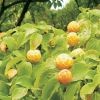
IDS Yearbook 2012
Susyn Andrews
Cornus kousa ‘Xanthocarpa’ first came to my attention from a note by Philippe de Spoelberch (2012), who saw it in the Botanisher Garten Solingen. “Cornus kousa aux fruits jaunes dont tout le monde a gouté la chair et ainsi nettoyé quelques graines. Ce fut le doux de la visite et, bien sûr, on se...
View PDF
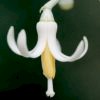
IDS Yearbook 2011
Bernd Schulz
Scientific editing by Susyn Andrews
Two species of the genus Alangium are occasionally cultivated in the botanic gardens of central europe. the following paper gives an introduction to the genus. the species A. chinense and A. platanifolium are presented according to BS’s own studies in words and pictures. the leaf shape is...
View PDF
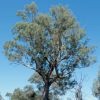
IDS Yearbook 2011
Derek McIntosh
The root cause of my interest in trees was my father’s love of all the trees that we grew up with in South Africa. He was a member of the Dendrology Society, and was financially very generous to all who shared this interest and were promoting the knowledge of trees. One of the great...
View PDF
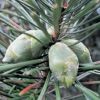
IDS Yearbook 2011
Chris Callaghan
Researching the affinities of ‘Pseudocathaya’ featured in the previous yearbook (Callaghan 2011), has made me realise that there are a number of key facts regarding its progenitor, the endangered endemic relict Cathaya argyrophylla that are in error in the literature authored by...
View PDF
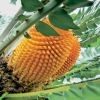
IDS Yearbook 2011
Elsa Pooley
Wood’s cycad is one of the most magnificent and rare plants of this family of ancient plants. It has been extinct in the wild for nearly a century. Only one four-stemmed male plant was ever found. It was first collected by John Medley Wood, director of...
View PDF
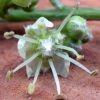
IDS Yearbook 2011
Peter Gregory
The genus Acer is most frequently admired for its autumn colour and in some species its bark but one less well documented attribute is the diversity and beauty of its inflorescences. Peter Gregory has been studying them for his new book on...
View PDF
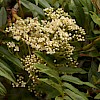
IDS Yearbook 2011
Keith Rushforth
Sorbus keenanii Rushforth is described from North East India and North Burma. The species is allied to Sorbus insignis and Sorbus harrowiana.In the Sino-Himalayan forests from East Nepal across to western Yunnan at elevations between c. 2400m and 3000m there is a group of...
View PDF

IDS Yearbook 2011
Gennady A. Firsov and Inna V. Fadeyeva
A remarkable meteorological record dating back to the eighteenth century and uninterrupted phenological record dating back to the nineteenth century have been accumulated in Saint-Petersburg, Russia. Gennady A. Firsov and Inna V. Fadeyeva have studied the effect of climate on the survival of...
View PDF
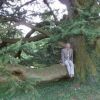
IDS Yearbook 2010
Frederic Weber
Frederic Weber has, since childhood, had the privilege of observing the cedar of Lebanon that has been growing at Le Vallon in Switzerland since the early nineteenth century. Here he lists the differences between Cedrus libani and...
View PDF
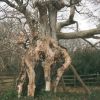
IDS Yearbook 2010
Christopher Carnaghan
In October 2010 a group of champion tree recorders, from all over Europe, met in Belgium, to exchange notes and discuss their findings. Christopher Carnaghan reports on this international meeting, its purpose and aims, and makes an...
View PDF
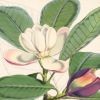
IDS Yearbook 2010
Carol Gurney
On the IDS tour to Sikkim in May 2010 we found a few trees of Magnolia hodgsonii (Talauma hodgsonii), this very handsome low-altitude magnolia growing as widely spaced trees of about 12m high in the wild forest up the Teesta valley near...
View PDF
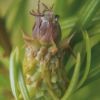
IDS Yearbook 2010
Chris Callaghan
Returning to the mist-shrouded mountain during spring, I was astounded to find what under normal circumstances I’d consider a tree of Cathaya argyrophylla (Cathay silver fir or yin shan), a conifer I know first-hand and more fully since writing the...
View PDF
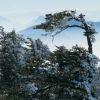
IDS Yearbook 2010
Chris Callaghan
Chris Callaghan of the Australian Bicentennial Arboretum updates his woody plants comparison of Wa Shan and its sister mountain, World Heritage-listed Emei Shan, finding Wa Shan to be deserving of recognition as one of the...
View PDF
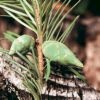
IDS Yearbook 2009
Dick Van Hoey Smith
On 1 October 2000 on a visit to Iseli’s Nursery, on the west coast of the United States, during a tour of the Dutch Conifer Society I had the great honour of receiving from our President the Award of Merit for the Development in the Field of Conifers. In addition to the award the manager...
View PDF
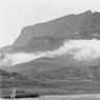
IDS Yearbook 2009
Chris Callaghan and S.K. Png
As is so often the case, what was expected to be a leisurely pursuit of magnolia study in the tranquil atmosphere of the Australian Bicentennial Arboretum, turned out to be an exciting adventure into the wilderness of China’s remote...
View PDF
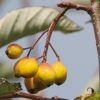
IDS Yearbook 2009
Keith Rushforth
Keith Rushforth reviews the species in Sorbus section Thibeticae Aldsasoro et al and names a new section, Sorbus section Dunnii Rushforth and nine new species, viz Sorbus burtonsmithii Rushforth, Sorbus guanii Rushforth, Sorbus heseltinei Rushforth, Sorbus hudsonii Rushforth...
View PDF
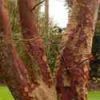
IDS Yearbook 2009
Koen Camelbeke
On a warm, sunny Friday afternoon in late October members from all over Europe gathered on the cafeteria terrace of Kalmthout Arboretum before being led out by its Director Abraham Rammeloo. Abraham briefly introduced the arboretum and pointed out during the walk many of the...
View PDF

IDS Yearbook 2008
Hugh McAllister and Keith Rushforth
Following the RHS Woody Plants Committee meeting on the 18 September 2008 at Wisley, Hugh McAllister and Keith Rushforth thought it might be helpful to draw together their personal conclusions on the Thibetica group within the genus...
View PDF

IDS Yearbook 2008
Koen Camelbeke
During my position as assistant at the Ghent University in Belgium I made notes for the biology students dealing with several morphological and systematical topics, one of them being fruit morphology and typology. This text was improved with experiences and...
View PDF
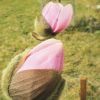
IDS Yearbook 2008
Chris Callaghan
This exquisite precocious magnolia, whose origins following extensive enquiries cannot be traced, was purchased in Tasmania in June of the same year, as an unknown Magnolia x soulangeana cultivar believed to have been imported from...
View PDF
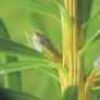
IDS Yearbook 2008
Chris Callaghan
Something very interesting occurred recently at the Australian Bicentennial Arboretum. A seven-year-old plant of Cathaya argyrophylla bore ten male flowers in September 2008, these then appearing like small 1.25 cm long female cones with spiralling scales. By late November, these ‘cones’ had elongated into...
View PDF
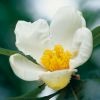
IDS Yearbook 2008
Charles Cresson
In the second of this occasional series on tree species extinct in the wild, Charles Cresson writes about the discovery of Franklinia alatamaha and its history in cultivation...
View PDF
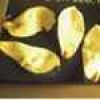
IDS Yearbook 2008
Stefan Cover
In general magnolia seeds respond readily to a variety of rearing techniques, and experienced growers often evolve their own particular methods for getting good results. For those interested, the following advice from Stefan Cover will provide some idea of what works well...
View PDF
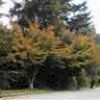
IDS Yearbook 2008
Clive Justice
Street and boulevard trees in the city of Vancouver are many and varied. One of the few cities in the mild climate of North America’s Pacific Northwest that still enjoys the post-colonial tradition of the ‘English disease’ (that of collecting trees). Vancouver boasts a great diversity of...
View PDF
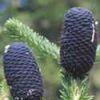
IDS Yearbook 2008
Keith Rushforth
In the 2007 Yearbook I gave an over-view of the Chinese spruces (Picea) with particular reference to the complex centred on Picea likiangensis (Franch.) E. Pritz. (Rushforth 2008). In that article I showed how the common spruce in the drainage of the Yarlung tsangpo...
View PDF
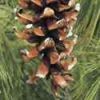
IDS Yearbook 2008
Michael Frankis
The newly described white pine from northeast Mexico Pinus stylesii Frankis ex Businský is compared with other related pines, including P. flexilis James, P. reflexa (Engelm.) Engelm., P. strobiformis Engelm., P. veitchii Roezl, and P. ayacahuite Ehrenberg ex Sclechtendal. The new combination...
View PDF
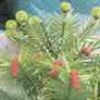
IDS Yearbook 2008
Jonathon Jones
Wollemia nobilis first hit the headlines in 1994 when David Noble found the grove of them northwest of Sydney, the exact location still secret. Tregothnan had been busy adding to its collection of rarities for and immediately set about...
View PDF
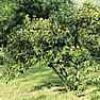
IDS Yearbook 2007
Mary Carey-Schneider
Locally called annatto or achiote, the fruits of Bixa orellana have satisfied two important areas of man’s needs for many centuries, fulfilling both basic dietary demands as a spice or colorant in a myriad of recipes across the Central and Latin American continent, and his spiritual aspirations and vanity as a...
View PDF
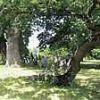
IDS Yearbook 2007
John Bulmer
During the Austrian Danube tour of June 2006 we were shown a layered oak in the Lednice Chateau Park situated in South Moravia (Czech Republic). At least one of the local foresters remembered the presence of a branch connecting the trunk with the...
View PDF
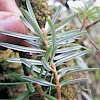
IDS Yearbook 2007
Chris Callaghan
In February 2007, my colleague, SK Png and I from the Australian Bicentennial Arboretum (ABA) flew from Singapore to Hanoi with the plan of climbing Mount Fansipan (Phan Si Pang), at 3,143 m Vietnam’s highest peak, in the hope of seeing the endemic Abies fansipanensis, recently relegated to...
View PDF
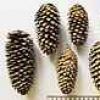
IDS Yearbook 2007
Keith Rushforth
The genus Picea in China falls into six distinct groups of species. The simplest to consider is the grouping which includes P. neoveitchii Mast. This rare northern species from southern Gansu to Shanxi just west of Beijing has never, as far as I am aware been introduced into the...
View PDF
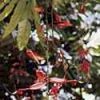
IDS Yearbook 2007
Carol Gurney
This tree, endemic originally in Burma, has been described as the ‘loveliest tree in the world’. On the IDS Tour to Burma in November 2006, a few of us who got up early on the last day of the Tour were lucky enough to see it in flower in a garden in Rangoon. This tree was about 10m high. It was...
View PDF
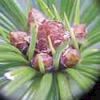
IDS Yearbook 2006
Chris Callaghan
The discovery of the relict Cathaya argyrophylla or Cathay Silver Fir in a remote wilderness area of Kwangsi province (now Guangxi Zhuang Autonomous Region) in Southern China in May, 1955, created more than a ripple of excitement in...
View PDF
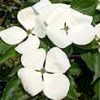
IDS Yearbook 2006
Wolfgang Eberts
There is no doubt that the flowering dogwoods are among the most beautiful ornamental trees and shrubs. Gerd Krüssmann, co-founder of the IDS, once wrote that if he had to decide to grow just one species of the large-bracted dogwoods, his choice probably would be...
View PDF
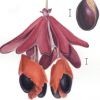
IDS Yearbook 2006
Bernd Schulz, translated by Wolfgang Bopp
Euonymus species are particularly prized for their decorative fruits. This work describes and illustrates (in water colour), the fruits and seeds of 30 commonly cultivated species found in Central European plant collections. The text discusses the criteria for species differentiation. As well as...
View PDF
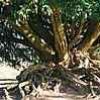
IDS Yearbook 2005
Fergus Kinmonth
The distribution zone of Taxus baccata extends from Finno-Scandia to Asia Minor and the Caucasus and southward into north Africa, but mainland Britain contains the greatest concentration of truly ancient trees. The range of this species is defined by...
View PDF

IDS Yearbook 2005
Georgina Magin
Palms in Cuba, magnolias in China or conifers in Vietnam – all around the world tree species are in serious trouble. While the extinction crisis and the fate of the world’s forests have been relatively high profile in the past two decades, rarely, if ever, is the fact that thousands of species...
View PDF
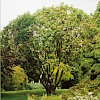
IDS Yearbook 2005
Dick van Hoey Smith
I was 17 when I finished secondary school and my father presented me on the occasion with a hundred Dutch guilders – quite an amount in 1939. However, the condition attached to the gift was that I should use it to...
View
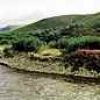
IDS Yearboook 2005
Olga Mochalova and Gennady A. Firsov
The Commander Islands are the western group of the Aleutian Islands, the western extremity and the upper part of a huge underwater volcanic range, which protrudes from east to west for up nearly 2,000 kilometres. They lie in the northern...
View PDF
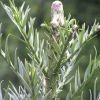
IDS Yearbook 2005
Chris Callaghan
At last the day many tree enthusiasts had waited 11 years for had arrived, with the chance to acquire one of the world’s rarest trees, Wollemia nobilis, the third and most recently described living genus in the Araucariaceae. With 292 First Generation Collector’s Edition Wollemi Pines, ranging from...
View PDF
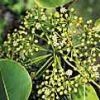
IDS Yearbook 2004
Ruth Bone
The island of Rodrigues lies 574km east of Mauritius at 63° 30'E, 19° 40' S (Strahm 1996), in the western Indian Ocean. With Mauritius and Reunion it forms the Mascarenes group; a trio of young volcanic islands, the oldest ofwhich has been dated to 7.8MY by potassium argon dating...
View PDF
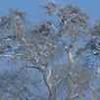
IDS Yearbook 2004
Dr Stephanos Diamandis
All over Greece, from the very north to the extreme south, on the mainland and islands alike, in villages or country towns, one finds magnificent, age-old plane trees draped gracefully over churchyards or main squares. In the squares where all the cafés and tavernas arrange their tables on hot summer days, these...
View PDF

IDS Yearbook 2004
Allen J. Coombes
During the 1990s a plant was distributed under the name Quercus × fernaldii and was acquired by several collections in Britain and continental Europe. It was also listed under the name Quercus ilicifolia rubra or Q. ilicifolia × rubra. Quercus × fernaldii Trel. is a hybrid between...
View PDF
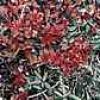
IDS Yearbook 2004
Gennady A. Firsov, Bo Nilsson, Alexander Taran and Svetlana Tschabanenko
The island of Sakhalin, situated at the eastern edge of Eurasia, is a unique region of Russia, and is home to a number of interesting plants. 75% of this large island (which measures 943 km from north to south) consists of hills and mountains, and the presence of large water reservoirs have a...
View PDF
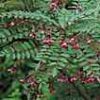
IDS Yearbook 2004
Hugh McAllister
Though named in 1933 by Handel-Mazzetti and collected numerous times by George Forrest, Sorbus filipes does not seem to have been introduced to cultivation until recently (1985), since when several expeditions and individual collectors have brought back...
View PDF
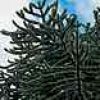
IDS Yearbook 2003
Poul Søndergaard
Araucaria araucana has its natural distribution in the Andes Mountains between 37º and 40º S and between 600 and 1800 m a.s.l. Around 1960 its distribution area was estimated at 250,000–300,000 ha, with 75% on the Chilean side of the border, and the remaining 25% in...
View PDF
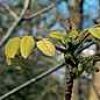
IDS Yearbook 2003
John M. Grimshaw
The walnuts have always excited interest for their combination of utility and beauty, but despite this, most species of Juglans remain little known in cultivation and poorly described in the literature, while specimens in many collections are incorrectly named. This paper aims to clarify...
View PDF
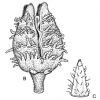
IDS Yearbook 2003
Martyn Rix and Andy Jackson
Of the 34 known species of the genus Nothofagus, nine are found in Chile and Argentina, three in New Zealand, and three in Australia; the remaining 19 come from New Guinea and New Caledonia. Nothofagus are commonly called Southern Beech and...
View PDF

IDS Yearbook 2003
Gennady A. Firsov and Aljos Farjon
We arrived in Petropavlovsk-Kamchatsky on a gloomy July morning, after a nine-hour direct flight from Moscow. The primary purpose of this botanical expedition being to replenish the holdings of the herbaria of RBG Kew, UK, and the...
View PDF

IDS Yearbook 2002
Timothy Waters
For a botanist brought up in a cold wet island off the northwest coast of Europe, with a grand total, not counting apomicts, of one endemic flowering plant species and just three indigenous conifers, the prospect of a field tour of the subtropical tip of New Zealand, famous for...
View PDF
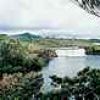
IDS Yearbook 2002
Mike Wilcox and Graeme Platt
The IDS Araucariaceae symposium, held in Auckland, New Zealand, 14–17 March 2002, and the pre-symposium tour of Northland is described above by Timothy Waters. Here we give an account of the post-symposium tour to New Caledonia, which...
View PDF

IDS Yearbook 2002
Aljos Farjon
On a botanical exploration in October 1999 in remote karst limestone mountains NW of Quan Ba close to the Chinese border in the northern Vietnamese province of Ha Giang an unidentified conifer was found growing on the summit ridge of one of...
View PDF

IDS Yearbook 2002
G. Richards, G. Orel, C. Harland and S. Jones
Plant hunters have searched the globe travelling to far and distant places for millennia, but only in recent times have plant breeders realised the value of the earth’s germplasm. Vietnam, with an area of 330,000 square kilometres, contains at least...
View PDF
International Dendrology Society
Hergest Estate Office, Kington, Herefordshire, HR5 3EG, United Kingdom
Charitable Incorporated Organisation registered in England and Wales number 1178252
All material on this site is Copyright © International Dendrology Society 1952–2025 unless otherwise stated.
Cookies are used to make this website work and to enhance your experience. To learn more about the types of cookies this website uses, see our Cookie Policy. Please provide consent by clicking the "I Consent" button or by cancelling this cookie notice.
